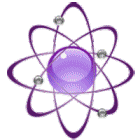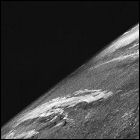The Upper Atmosphere Research Panel
 The first meeting of the Upper Atmosphere Research Panel, known more informally as the V2 Panel, is held, comprised of researchers from various universities, industry, and the military, to decide on peaceful uses for the nearly 80 rockets’ worth of German V2 rocket hardware seized in Germany at the end of World War II. The technology of the rockets themselves will be studied, while payloads are proposed to study the properties of Earth’s upper atmosphere, radiation received from the sun, and the environment of space itself. Also of key importance will be reverse-engineering the V2 to aid in the design of American-made sounding rockets. Eventually the German scientists and engineers who were taken into custody with the captured hardware will be brought to the U.S. to continue their research.
The first meeting of the Upper Atmosphere Research Panel, known more informally as the V2 Panel, is held, comprised of researchers from various universities, industry, and the military, to decide on peaceful uses for the nearly 80 rockets’ worth of German V2 rocket hardware seized in Germany at the end of World War II. The technology of the rockets themselves will be studied, while payloads are proposed to study the properties of Earth’s upper atmosphere, radiation received from the sun, and the environment of space itself. Also of key importance will be reverse-engineering the V2 to aid in the design of American-made sounding rockets. Eventually the German scientists and engineers who were taken into custody with the captured hardware will be brought to the U.S. to continue their research.

 President Truman signs the Atomic Energy Act into law, laying the groundwork for both future military development of nuclear weapons and a civilian nuclear energy industry, though the latter will take time (and further amendments to the law) to develop. The primary development of the initial version of the law is the founding of the U.S. Atomic Energy Commission, a civilian agency intended to lead both areas of development (and intended to take over from the scientists who, up until now, had been operating in secret as part of the Manhattan Project). Over time, the Commission’s responsibilities will grow to include regulation, safety, and disposal of dangerous radioactive material. Major amendments will be made in 1954 under President Eisenhower to encourage the peacetime nuclear power industry to grow.
President Truman signs the Atomic Energy Act into law, laying the groundwork for both future military development of nuclear weapons and a civilian nuclear energy industry, though the latter will take time (and further amendments to the law) to develop. The primary development of the initial version of the law is the founding of the U.S. Atomic Energy Commission, a civilian agency intended to lead both areas of development (and intended to take over from the scientists who, up until now, had been operating in secret as part of the Manhattan Project). Over time, the Commission’s responsibilities will grow to include regulation, safety, and disposal of dangerous radioactive material. Major amendments will be made in 1954 under President Eisenhower to encourage the peacetime nuclear power industry to grow. President Truman, after months of weighing the pros and cons of offering amnesty to many of the German scientists involved in the V2 rocket program, signs off on Operation Paperclip, a project to repatriate those scientists to the United States. The initial estimate is that a thousand German scientists will be brought to the U.S., but over time the total will grow closer to 2,000, bringing well over 3,000 family members with them. Wernher von Braun and Hermann Oberth are among the scientists and engineers who accept the offer to work for the U.S., and their efforts, while they do have military value, will form the core of the nascent U.S. space program, with von Braun eventually designing the Saturn V rocket that will take future astronauts to the moon. The Soviet Union mounts a similar program in the weeks to come, attempting to repatriate German scientists and engineers to continue their rocketry research for the Soviets.
President Truman, after months of weighing the pros and cons of offering amnesty to many of the German scientists involved in the V2 rocket program, signs off on Operation Paperclip, a project to repatriate those scientists to the United States. The initial estimate is that a thousand German scientists will be brought to the U.S., but over time the total will grow closer to 2,000, bringing well over 3,000 family members with them. Wernher von Braun and Hermann Oberth are among the scientists and engineers who accept the offer to work for the U.S., and their efforts, while they do have military value, will form the core of the nascent U.S. space program, with von Braun eventually designing the Saturn V rocket that will take future astronauts to the moon. The Soviet Union mounts a similar program in the weeks to come, attempting to repatriate German scientists and engineers to continue their rocketry research for the Soviets.  Mounting a 35mm film camera into a captured German V2 rocket launched to an altitude of 65 miles, scientists and engineers at the U.S. Navy’s White Sands Missile Range capture the first photo of Earth from space. (The previous highest-altitude photos taken were from a hot-air balloon in 1935, from an altitude of less than 14 miles, although at that altitude the photos did reveal the curvature of the Earth.) The rocket and camera are destroyed when they fall back to Earth, but the reinforced film cartridge survives. This is the first of many such experimental flights carried out at White Sands.
Mounting a 35mm film camera into a captured German V2 rocket launched to an altitude of 65 miles, scientists and engineers at the U.S. Navy’s White Sands Missile Range capture the first photo of Earth from space. (The previous highest-altitude photos taken were from a hot-air balloon in 1935, from an altitude of less than 14 miles, although at that altitude the photos did reveal the curvature of the Earth.) The rocket and camera are destroyed when they fall back to Earth, but the reinforced film cartridge survives. This is the first of many such experimental flights carried out at White Sands.